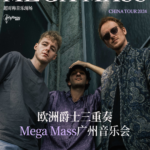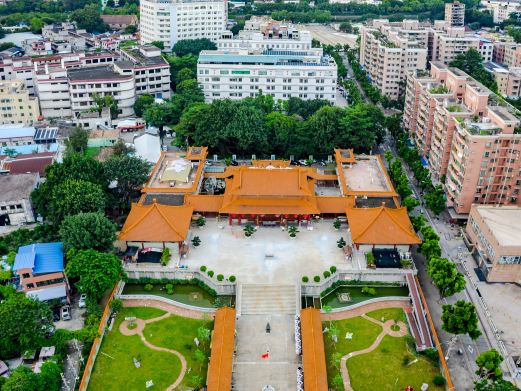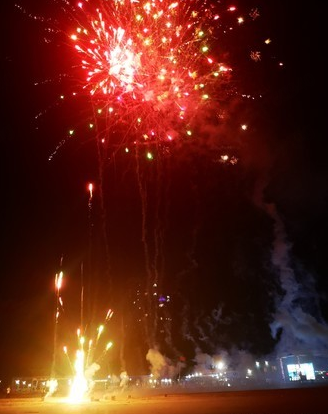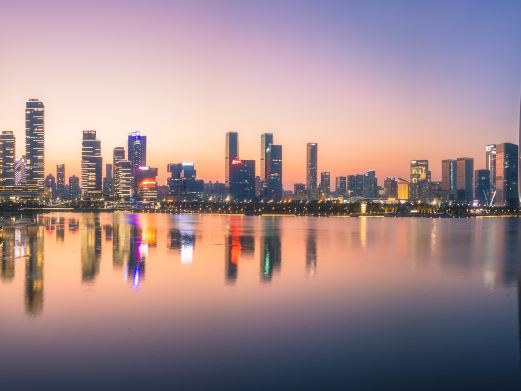Golden Rooster Rock is located 5 kilometers along the Qinggao Highway in Qingcheng District, Qingyuan City, Guangdong Province. It is a historic scenic spot and religious site, serving as the location of the Qingyuan Taoist Association. According to the ‘Qingyuan County Annals’: During the Kaiyuan period of the Tang Dynasty, a geomancy master reported to the Tang capital Chang’an, claiming that there was a spiritual mountain in Qingyuan where golden mushrooms were discovered.
Emperor Xuanzong of Tang then sent envoys to seek them and obtained the ‘golden mushrooms’ here, which made a clear and sonorous sound like metal when struck, hence the name ‘Golden Mushroom Rock’. The Ming Dynasty’s ‘Guangdong General Chronicles’ records: The depth of Golden Mushroom Rock is unfathomable, and it is said to be connected to the Yunmeng Marsh. The rock is divided into three caves; one cave contains a stone well, dozens of feet deep, with the well’s eye connected to the sea’s eye. Another cave has three stones standing side by side, with water dripping on them yet the ground remains dry. Below is a cavity with stone swallows. The top features two celestial ponds, one large and one small. Ge Zhichuan (Ge Hong) of the Jin Dynasty practiced alchemy here; during the Six Dynasties, the hermit Lu Xiaozhang (Lu Du) also lived here, performing many miraculous deeds and was known for his magical arts. There is a pillow stone inside, which the locals still refer to as ‘Lu Gong’s Reclining Stone’.The scenic area contains karst cave formations that are over 100 million years old, named after the stalactite relief on the hall’s stone wall that resembles a golden rooster. Historical literati such as Su Dongpo, Fang Xinru, Tang Xianzu, and Qu Dajun have left inscriptions and poems inside the cave. Golden Rooster Rock is surrounded by lush mountains and clear waters, with auspicious clouds drifting by.
After generations of exploration and cultivation, especially after a decade of restoration, it has now become a spiritual and blessed land in Qingyuan. Golden Rooster Rock was formed in the ancient times and is a karst landform remnant after a volcanic eruption. The Golden Zhi Fairy Cave within the scenic area has a cultural history of over 1680 years. Walking through the nearly hundred-meter-long sightseeing tunnel to the cave, one arrives at a spacious cave entrance, where a natural large skylight is visible on the cave’s top, with sunlight shining down from the skylight tens of meters high, as if a large bright lamp, illuminating the entire cave. The hall inside the cave is approximately 30 meters high from the ground to the top, covering an area of over 2000 square meters, capable of accommodating hundreds of people. The hall is wide and winding, with grotesque rocks in various shapes, among which the most striking are the pair of lifelike stalactite stone lions in the center of the hall. The fairy mist rises in the hall, white as snow, changing like clouds. The natural golden rooster relief on the hall’s stone wall, with its head held high and wings spread as if to fly, is why Golden Rooster Rock is named as such. Inside the hall, there are caves within caves, passing through mysterious underground rivers and bottomless pits, along the hundred-step cloud ladder, one can observe the mother and child stone lions, golden bitter melon, golden gourd, hanging golden bell, and other masterpieces of nature’s craftsmanship. Golden Rooster Rock stands at the southern foot of Bijiashan Mountain, and upon reaching the summit, one can overlook the beauty of the entire city. The scenic area of Golden Rooster Rock gathers the ‘Confucianism’, ‘Buddhism’, and ‘Taoism’, making it a ‘Three Teachings Gathering’ sacred place, with the Golden Zhi Hall, the large Huang Daxian Temple in Guangdong, Ge Hong Temple, and Sanqing Hall as places for prayers, where the incense burns all year round.
Scenic spot feature: China’s Elderly Leisure Journey —— Wonders of the Fairy Cave.
Chinese Blessed Land Cultural Blessing Tour —— Jinzhi Guan. Chinese History Education Tour —— Zhongsu Tower Museum. Large-scale in China and with national characteristics —— Chinese Auspicious Culture and Art Dragon Culture Collection Museum. Integrating leisure, entertainment and fruit tasting —— Orchard Barbecue. Opening hours: Open all year round from 08:30 to 17:30.

Service facilities: Parking lot: [Jinjiyan Parking Lot]. Reference price: Free. Address: Five kilometers along Qinggao Highway, Dongcheng District, Qingcheng District, Qingyuan City, Guangdong Province. Parking spaces: 200.










